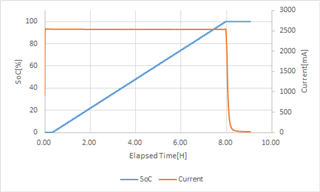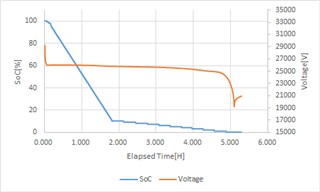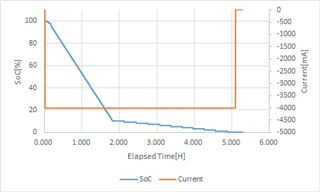Other Parts Discussed in Thread: GPCCHEM
Hi them.
We used the BQ34Z100-G1 and completed the learning cycle. The gauge showed UpdateStatus=06, indicating that learning was complete.
Then, we charged and discharged and evaluated the remaining power returned by the gauge. The gauge is returning a likely correct SoC when charging. However, the SoC decreases sharply during discharge, and I believe this to be incorrect.
Is it because the CHEM ID is wrong? Also, are there any other possible causes?
Charge SoC
Discharge SoC
Additional information
- BQ34Z100-G1 (FW Ver.0.16)
- CHEM ID = 0435h
- 8S1P LiFePO4 Battery 40Ah (So using host scaling 2. Gauge's current and capacity is indicate 1/2 of actual value.)
- FullChargeCapacity shows correct capacity.
- Discharge is performed at a constant current of 8000mA. Using scaling, the gauge is correctly showing 4000mA.







